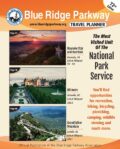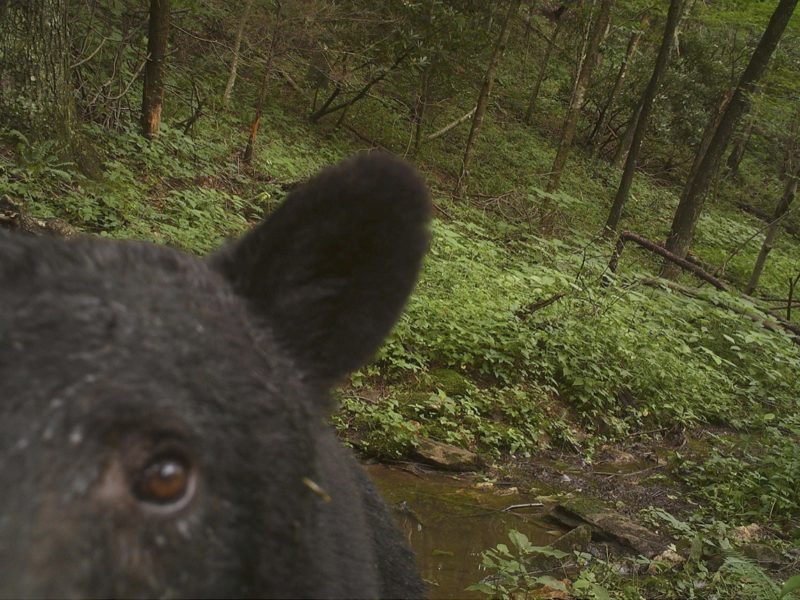
Do you have photos of brown lumps? I do. Some of those brown lumps are howler monkeys set against a background of green leaves in Panama. I think I have some similar multi-toned photos of sloths hanging out in treetops as well, with their grays and blacks contrasting against the green leaves. Then, a bit closer to home, I have some photos of black lumps representing black bears. The most recent of those was in Cades Cove in the Great Smoky Mountains National Park (GSMNP) last summer.
But I think the first time I ever saw a bear in the wild was at the Carl Sandburg Home National Historic Site in Flat Rock, NC. It’s been well over a decade now, but I remember it as if it were today. I was hiking up the trail one evening and I reached the flat stretch at the top that leads to the huge slab of granite at the top of Big Glassy with the bench and the view. A big lump suddenly ran across the trail a distance ahead of me. At first, I thought it was a dog. But when I reached the spot in the trail where the lump had crossed, I didn’t see any sign of it. So, I continued on to the end of trail and turned around for the return trip. As I approached the bend in the trail where it began to descend, I saw one big black head with three little ones next to it tucked behind a structure at the edge of the trail. There were not any other people around and I had to walk that way to go back down the trail, so I began talking to the bears in hopes of scaring them away. I think I said hello to them and maybe a couple sentences more before momma and her cubs turned around and trotted off into the brush. I heaved a sigh of relief. But, no pictures. That was in the age of flip phones and I don’t remember if it even took pictures.
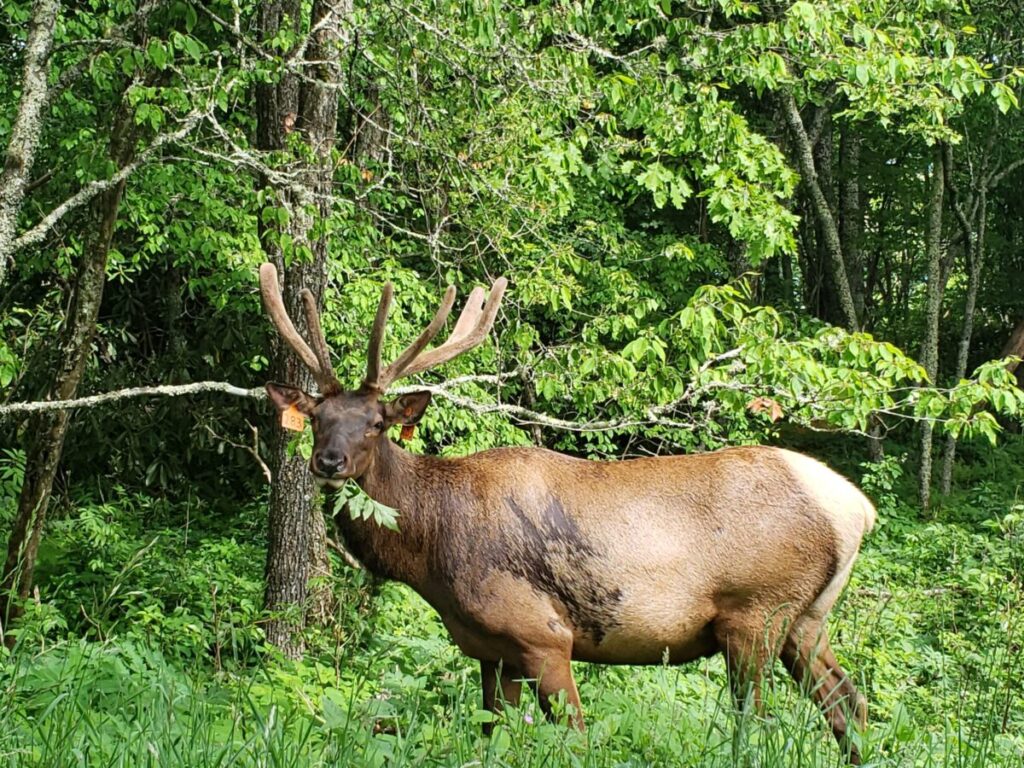
Photo taken from a vehicle with a zoom lens
Since then, I’ve also seen bears along the Roaring Fork Motor Nature Trail, also in GSMNP. No pictures there, either. What I have good pictures of are elk. Elk grazing and bugling their distinctive high pitch in Cataloochee Valley (GSMNP as well) among the white wooden historic buildings where some of the early settlers lived and worshiped. Elk herding their harems at the Oconaluftee Visitor Center (NC side of the GSMNP) against the backdrop of the historic buildings at the Mountain Farm Museum. I’ve seen elk in the Oconaluftee River, in a front yard in Maggie Valley (traffic jam on top of the traffic jam to return home after the viewing the solar eclipse), along Heintooga Spur Road (both on the Parkway portion and GSMNP) and most recently, there was a herd of 7-8 elk meandering up the dirt back road in Maggie Valley that my husband and I were trying to bike up one afternoon. We kept our distance until they left the roadway.
Wildlife are part of the allure of any natural area- visitors often ask about seeing elk or a black bear or about fishing in Parkway waters. Because the Parkway is 469 miles long, it has the third largest geographical range of any national park and is one of the most biologically diverse units of the NPS. The road corridor and adjacent recreation areas provide a refuge for lots of native things: over 2,000 plant species, 30+ each of amphibians and reptiles, 60 different mammals, 225 bird species and almost a hundred different species of fish!
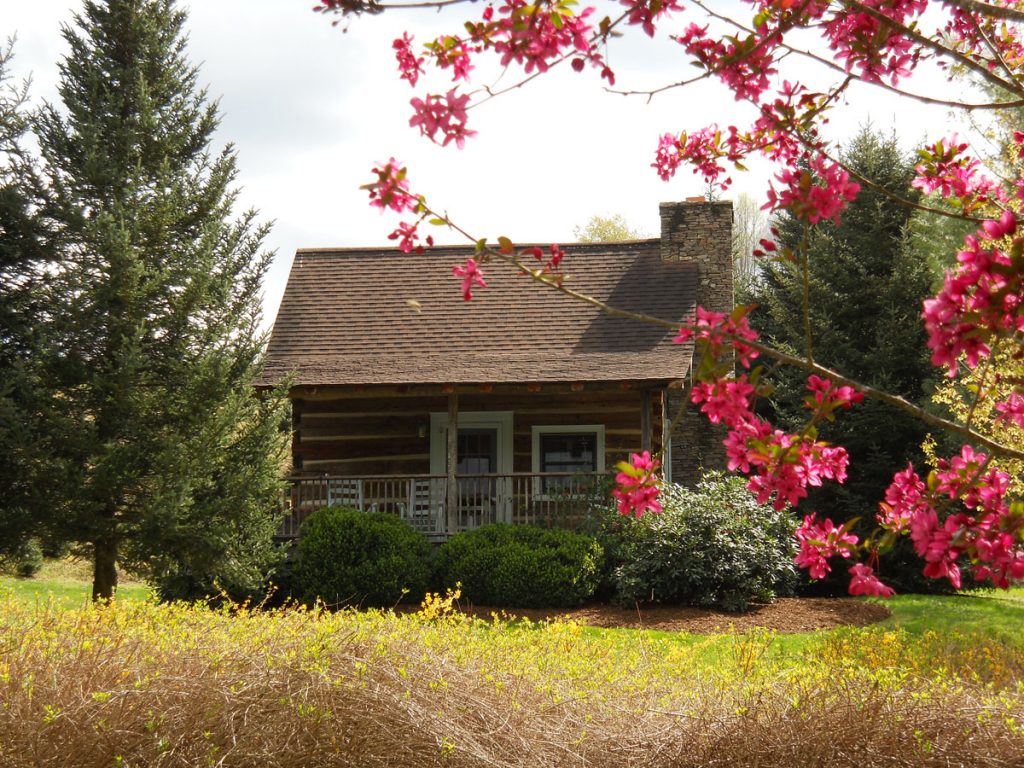
Boyd Mountain Log Cabins offers fishing, hiking & wildlife habitat
If you want to see wildlife on your next Parkway journey, here are some suggestions:
- Go hiking. Many attractions and towns & counties along the Parkway offer hiking trails with opportunity to see varied wildlife from birds to amphibians. Wildlife frequent specific habitats- like streams for drinking and forest edges for both shelter and access to grassy meadows, so pay attention to your surroundings including the types of trees amount of foliage present. Find out what kind of habitat your desired species likes and then go visit that habitat.
- Visit an Attraction. Some attractions even have special wildlife exhibits– check out their websites or give them a call to find out if it’s likely to see the species you’re seeking. There are zoos, aquariums, and a nature center in the list!
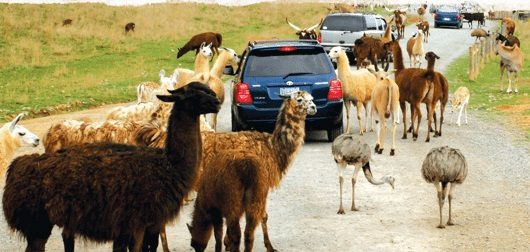
Virginia Safari Park
- Get involved. Several organizations active in natural or cultural resource preservation are active in the Parkway region and may offer programs or other educational opportunities regarding wildlife. The Blue Ridge Parkway Foundation partners with the National Park Service staff at the Blue Ridge Parkway on a citizen science program using cameras to monitor wildlife behavior in areas along the Parkway. The cameras have captured images of deer, bear, coyote, bobcats, foxes, elk, a variety of bird species and numerous other animals. The image at the top of this story is from one of those camera traps. As the Parkway’s nonprofit fundraising partner, they are involved in numerous projects which support cultural and historical preservation, natural resource protection, educational outreach, and visitor enjoyment.
- Ask an expert. The towns & counties bordering the Parkway also offer lots of opportunities for wildlife viewing on everything from greenways to strenuous hikes. These tourism folks can provide lots of tips specific to their area, including where to eat, where to stay and where to stroll for wildlife viewing. When you are looking for wildlife, move slowly and quietly. Be focused on the environment around you: listen for noises and watch for movements.
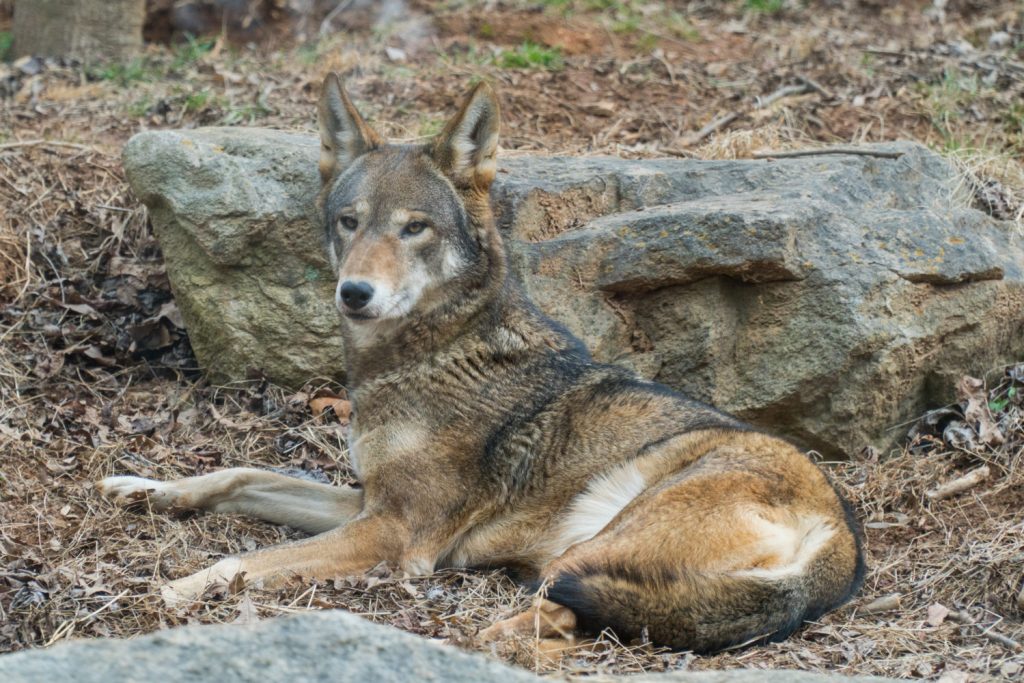
WNC Nature Center
- Time of day matters. Some wildlife species, including elk, are crepuscular (impress your friends with that word!), meaning they are mostly active in the morning and evening. So, either go for your stroll during those times, OR, check out these lodging options and stay right where the wildlife are. If these don’t fill the bill, then look for lodging that is surrounded by natural areas, like campgrounds, B&Bs, resorts or cabin rentals tend to be.
- Cast a line. If you like to fish, there are numerous lodging options along the Parkway that offer onsite fishing. Or, there are lots of nearby fishing spots in the areas surrounding the Parkway. Always make sure that you are following the appropriate guidelines for a fishing license, daily limit, lure type, etc.
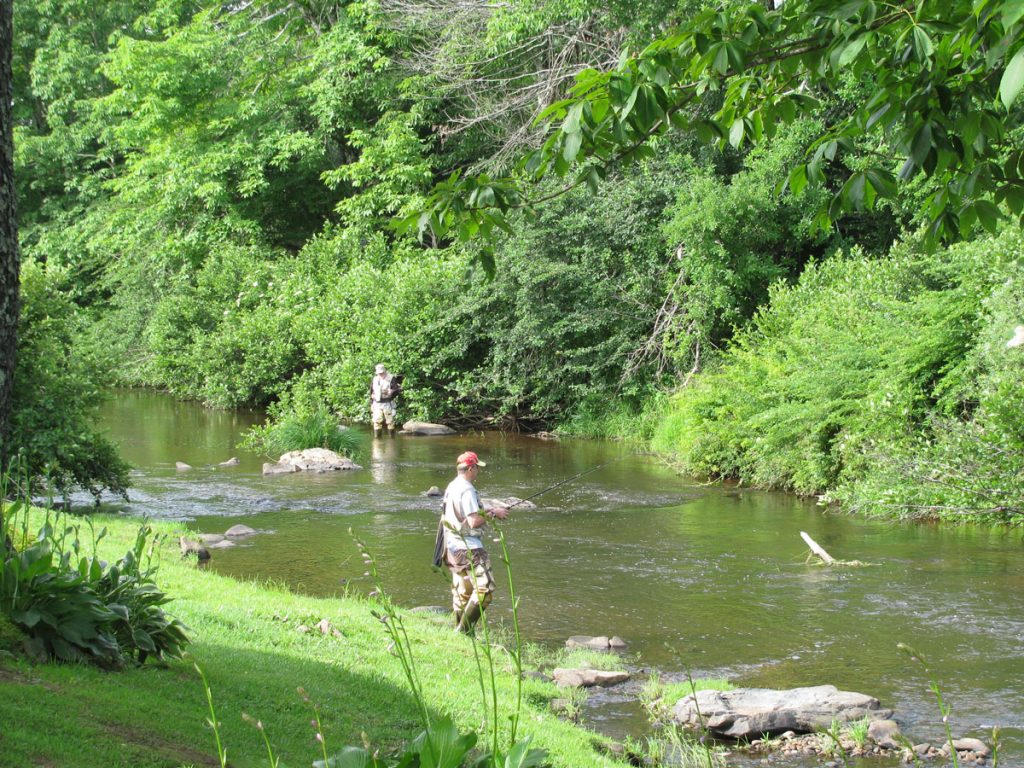
Down by the River Campground offers trout fishing
Whatever type of wildlife you’d like to see, please follow leave no trace principles, be respectful and keep your distance. Don’t be that person trying to pet or feed a bear or an elk (or any other wild animal). They are dangerous wild animals and if they get used to people, they may eventually hurt someone and be euthanized. If you are close enough that your presence causes an animal to change its behavior, then you are too close and you should back away.

